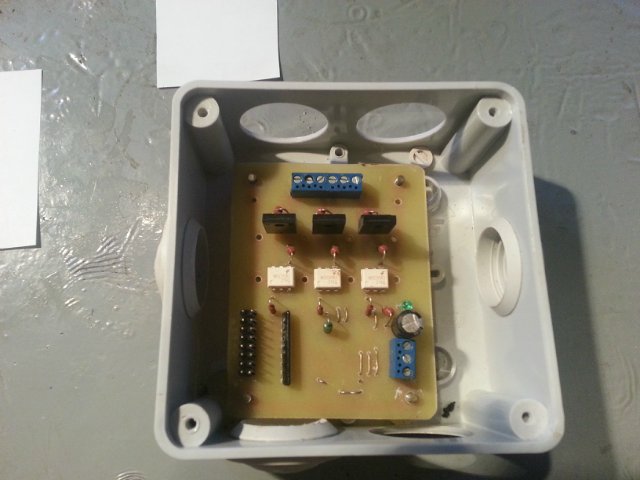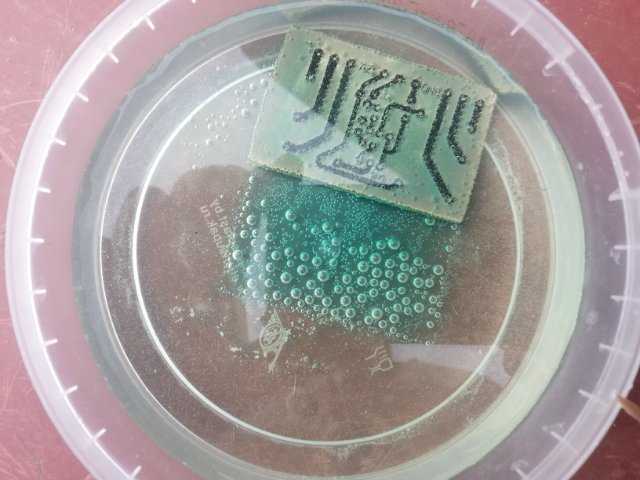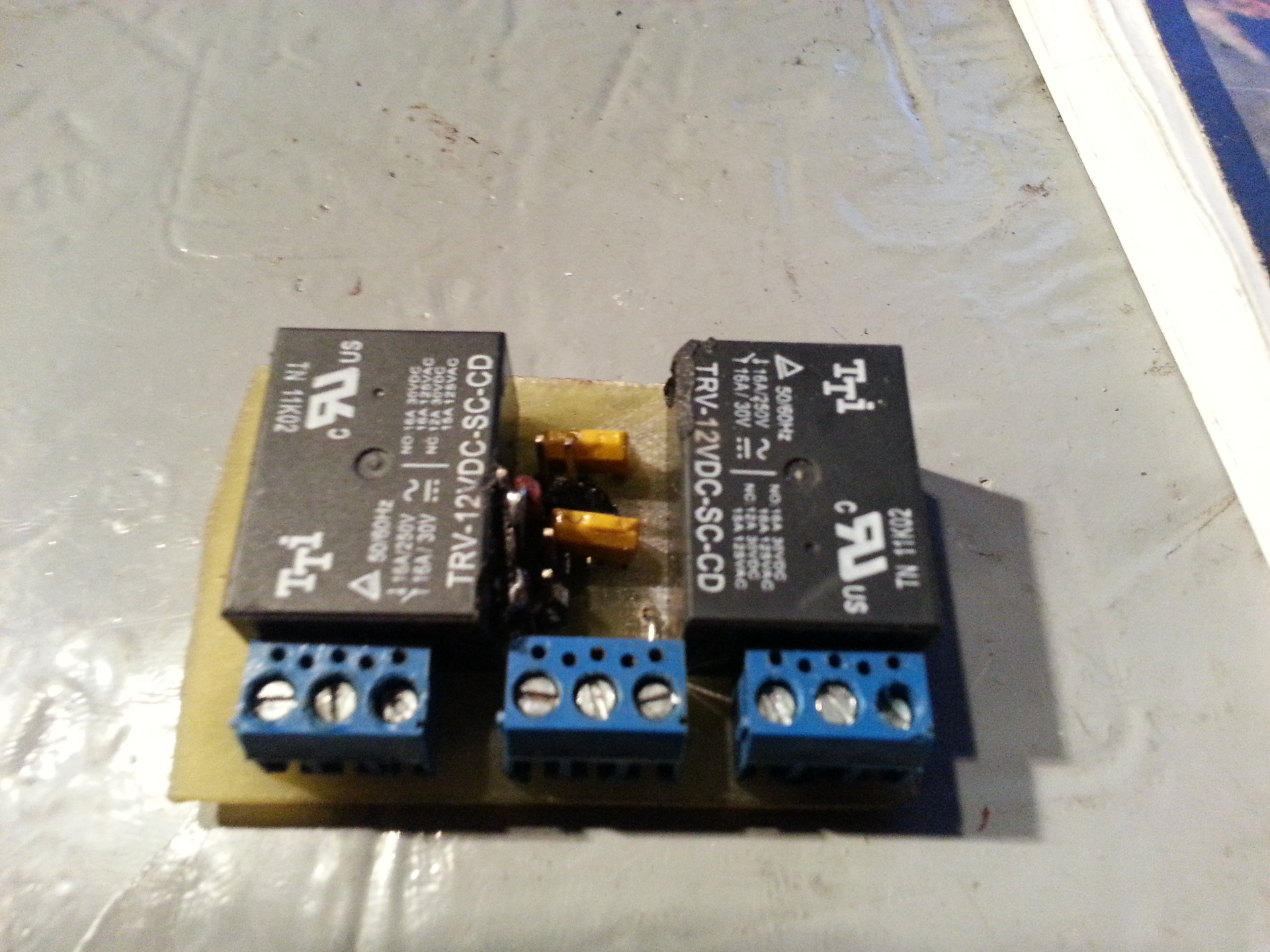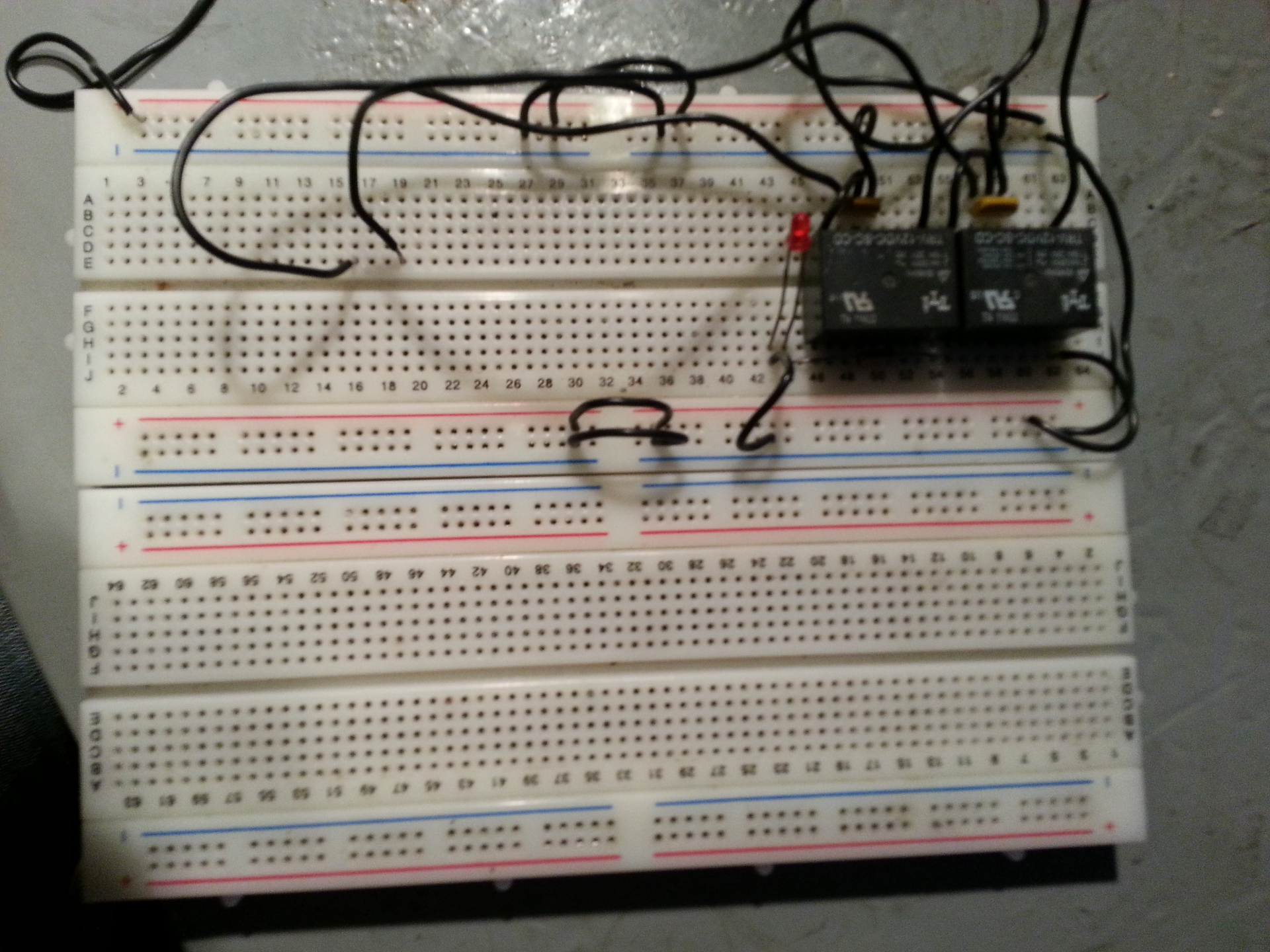My experience in building 1-Wire industrial network
Prehistory
Like many habra users, possessing some skills and a good imagination, somehow came across the site, then he was still hanging on the people, and was dedicated to pairing home-made devices with a PC. It was then that the seed of impetuous interest was born to do something and manage it from a computer. Then, of course, it all started with a printer port lpt and gradually grew into a com port and eventually usb. All would be fine, until I came across the site, the dedication to create a smart home system. Then I realized that I was really interested. Let's skip a long and interesting story and go straight to the topic. I am writing this article as an amateur, not a pro, and I hope it will help you to create your own network from scratch, or to learn useful experience for your network. In the article I want to describe the creation of your 1wire network with zero, including all stages of construction and useful tips.- Designing, printing, etching, tinning and soldering a printed circuit board;
- Installation of industrial tires 1wire;
- Software and hardware management and monitoring.
 As you can see, one end is inserted into the usb port of the service system, it can be a computer or a wi-fi router, or unicameral solutions. The other end is the “mother” of the RJ-11 connector (standard telephone connector). I also use calibrated temperature sensors (DS18B20 +):
As you can see, one end is inserted into the usb port of the service system, it can be a computer or a wi-fi router, or unicameral solutions. The other end is the “mother” of the RJ-11 connector (standard telephone connector). I also use calibrated temperature sensors (DS18B20 +):  I also use and plan to use:
I also use and plan to use:- Calibrated temperature sensors (DS18B20 +);
- 4-channel Analog-to-Digital Converters (DS2450S);
- 8-channel input / output chips (DS2408 +).
 VANIL-1853S (I did not use a board with 5 I / O and 3 triacs to connect high-voltage devices, so only through relays or magnetic starters, the range of applications is very wide):
VANIL-1853S (I did not use a board with 5 I / O and 3 triacs to connect high-voltage devices, so only through relays or magnetic starters, the range of applications is very wide):  As you can see, everything is neatly placed in standard plastic sealed boxes with screws and hot melt glue. At the moment I use a network of only 20 thermal sensors, to monitor the temperature in the country, everything is connected to the server on Gentoo Linux. Software for working with a network of owfs. This first part of the article is intended for familiarization, the rest of the detailed information will be added later and at will of habouriors. I would also like to know your experience and listen to criticism. About etching boards: I switched from ferric chloride to salt + citric acid + hydrogen peroxide today. While there is no information on the quality of etching, the board is still being etched:
As you can see, everything is neatly placed in standard plastic sealed boxes with screws and hot melt glue. At the moment I use a network of only 20 thermal sensors, to monitor the temperature in the country, everything is connected to the server on Gentoo Linux. Software for working with a network of owfs. This first part of the article is intended for familiarization, the rest of the detailed information will be added later and at will of habouriors. I would also like to know your experience and listen to criticism. About etching boards: I switched from ferric chloride to salt + citric acid + hydrogen peroxide today. While there is no information on the quality of etching, the board is still being etched:  The composition is as follows: 100ml of peroxide, 30 grams of citric acid and 5-6 grams of table salt. And so after a while I want to add an article, and first of all I would say that I liked the new method of etching boards, a little longer, but the effect is not worse than from ferric chloride. I used to pay a board to control the level of liquid in a well with technical water, there are two sensors installed, one just above the nose, and the second at the top, there is also a semi-automatic control, manual start and stop, indicators in the form of light bulbs, talking about work system. Fluid level sensors are usually expensive, so I made them myself, unfortunately there is no opportunity to take pictures, they are already immersed in a well. But with pleasure I will describe the components and design.
The composition is as follows: 100ml of peroxide, 30 grams of citric acid and 5-6 grams of table salt. And so after a while I want to add an article, and first of all I would say that I liked the new method of etching boards, a little longer, but the effect is not worse than from ferric chloride. I used to pay a board to control the level of liquid in a well with technical water, there are two sensors installed, one just above the nose, and the second at the top, there is also a semi-automatic control, manual start and stop, indicators in the form of light bulbs, talking about work system. Fluid level sensors are usually expensive, so I made them myself, unfortunately there is no opportunity to take pictures, they are already immersed in a well. But with pleasure I will describe the components and design.  List of components used:
List of components used:- Reed switch for metal doors, round, soldered interiors
- A piece of HDPE pipe about 10-15 cm
- Silicone, for roofing
- Rubber from the unsoldered box with a hole
- A piece of UTP wire, 4-wire (there was no less) of the required length
- Float material, I used polystyrene

 This system does not work with 1wire directly, you can only read the status of its work. What is actually enough, although simply connecting to one of the 8 I / Os, you can simulate the filling of the well and start pumping from the computer. Everything is mounted in a sealed box, including power supplies to the din rail
This system does not work with 1wire directly, you can only read the status of its work. What is actually enough, although simply connecting to one of the 8 I / Os, you can simulate the filling of the well and start pumping from the computer. Everything is mounted in a sealed box, including power supplies to the din rail  I also advise newbies to buy a debug board, it looks like this:
I also advise newbies to buy a debug board, it looks like this:  Here are the photos of the box:
Here are the photos of the box: 
 I use the SLayer5 program to design the boards. The only thing I didn’t put all the PCB layouts here, as well as those that I hadn’t yet implemented. But this topic is not the final product, only my experience, and I am going to develop it. so the kernel had to build fuse to work with owfs, if you know Linux, then it will be easy for you to include a couple of new items when compiling the kernel. This is about the sofa. I scan the sensors every 15 minutes through CZK, then I draw the graphs by 4, that is, readings in an hour. Unfortunately, I can’t find anything in this article that I wanted, so I’ll write the rest in the next part, look for the 1wire tag
I use the SLayer5 program to design the boards. The only thing I didn’t put all the PCB layouts here, as well as those that I hadn’t yet implemented. But this topic is not the final product, only my experience, and I am going to develop it. so the kernel had to build fuse to work with owfs, if you know Linux, then it will be easy for you to include a couple of new items when compiling the kernel. This is about the sofa. I scan the sensors every 15 minutes through CZK, then I draw the graphs by 4, that is, readings in an hour. Unfortunately, I can’t find anything in this article that I wanted, so I’ll write the rest in the next part, look for the 1wire tag')
Source: https://habr.com/ru/post/238501/
All Articles